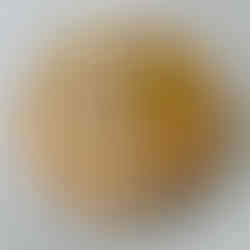Foraging with Kids
- Catkin & co

- May 14, 2021
- 4 min read
Updated: Jul 8, 2021
Foraging with kids is a fantastic family activity and a great way to connect children with the world around them. 'Foraging' just simply refers to searching for food in the wild. There are many plants we can eat, and many are also used in herbal medicines. Here we explain some of the simple things you can forage with kids and also recipes that are fun to try as a family.
Scroll down for ideas on what to forage and recipes.
Most of us have 'foraged' at some point - got apples from a tree or picked a blackberry from a bush. Once you find out more about plants that are safe to eat, it's fun to learn to recognise them and try them in recipes. Humans have always foraged but as convenience started to take over, the connection with the land sometimes becomes lost. Foraging with your family is a great way to reconnect with nature. You can check out our Foraging Cards which are a brilliant introduction to foraging with kids. We have three sets that focus on foraging edible flowers, wild herbs and weeds, and fruits. You can find out more here.
All the recipes here are based around plants that you are likely to come across as a family. Some you may never have heard of or think you've seen, but once you learn what they look like then you realise you've been walking right past them! At Catkin & co we have sets of foraging cards that cover edible flowers, wild herbs, and weeds, as well as fruits. The cards are a great introduction to foods we can forage. they include clear images and also information about them such as where to find, tastes, and how to use them.
A really good activity is to create your own foraging journal - take photos or draw the plants you find, give them your own name and description. Write down how they smell and taste. then if there is a recipe you try and like- write that down too!
Scroll down for links to all the recipes to try.
Foraging advice
Finding tasting edible plants is a great activity but it's important to follow key advice, outlined below.
Be confident that you have identified the plant correctly before eating. Some edible plants have look-a-likes. If you are not totally sure, don't eat it! Also, be aware for allergic reactions - only try a small amount of a plant if you've never had it before. Sometimes those with hayfever or asthma may be advised to avoid edible flowers.
Forage only where allowed - do not take from private land without permission. Never uproot plants.
Take only where there is an abundance, and just take what you need, Wildlife needs the plants too! never take a lot from the same tree or bush.
When foraging flowers, mornings are a good time to harvest - the taste tends to be stronger.
Please note -Catkin & co cannot be held responsible for your foraging activities - take care.
How and what to forage with kids
You can forage any time of the day and any time of the year - there is always something to find though as you'd expect - less to find in winter. You can find things to forage anywhere - not just the countryside but also parks and gardens. Some you even find at the roadside - really! Some plants are more likely to grow in some places, such as coats or moors, but most of the recipes featured here include plants that most of us can find most days. It is useful to take a basic or cotton bag with you to put in your finds. Plastic bags aren't a good call as they can make the plants all sweaty.
The lists below are just some of the edible plants that you may come across as a family and are fun to forage and use in recipes.

Edible flowers
Lilacs
Elderflowers
Flowering redcurrant
Cherry Blossom
Chamomille
Lavender
Violets
Pansies
Rose
Honeysuckle
Nasturtiums
Calendula
Magnolia
Gorse
Wild herbs and weeds

Wild Garlic
Water Mint
Pineapple Weed
Mallow
Daisies
Meadowsweet
Dandelions
Red clover
Garlic Mustard
Chickweed
Cleavers
Nettles
Sorrel

Fruits
Blackberries
Wild Strawberries
Elderberries
Sloe berries
Hawthorn berries
Rosehips
Sweet Chestnuts
Hazelnuts
Crab Apples
Wild Cherries
Raspberries
Walnuts
Sweet Chestnuts
Bilberries
Damsons
Foraging recipes to try:
Here are some of the simple recipes that we have tried and experimented with as a family. Click on the link to access the recipe. If the link isn't working then we are still in the process of writing the recipe up!
Lilac recipes:
Rose recipes:
Rose Syrup
Rose and white chocolate truffles
Rose and Pistachio Persian love cake
Pansy and Violet recipes:
Coconut and Line white chocolate bark with pansies
Violet Creams
Elderflower recipes:
Elderflower syrup
Elderflower cordial
Elderflower cakes
Dandelion recipes:
Dandelion honey
Dandelion and lemon shortbread biscuits
Dandelion and lemon buns
Flowering redcurrant recipes:
Flowering redcurrant syrup
Cherry blossom recipes:
Cherry blossom jam
Lavender recipes:
Coming soon...
Chamomille recipes:
Honeysuckle recipes:
Nasturtiums recipes:
Calendula recipes:
Magnolia recipes:
Gorse recipes:
Foraging with Kids - Foraging identification cards
To buy our foraging cards you can head to our online shop or click on the links below:
Foraging with kids - Edible Flowers
Foraging with kids - Wild Herbs & Weeds
Foraging with kids - Fruits
Here at Catkin & co, we are passionate about nurturing a love of nature in children. We provide the tools to help encourage children to explore, discover, and be amazed every single day. We create forest school-inspired resources, kits, and imaginative play packs to help foster your child's lifelong love of nature. We are parents, educators, nature lovers - everything has been tried, tested, and approved by our very own woodland warriors!
Check out our other cards and kits in the online shop.














































That sounds super tasty with a summery feel! I am tempted to try it out.
Looks very attractive too.